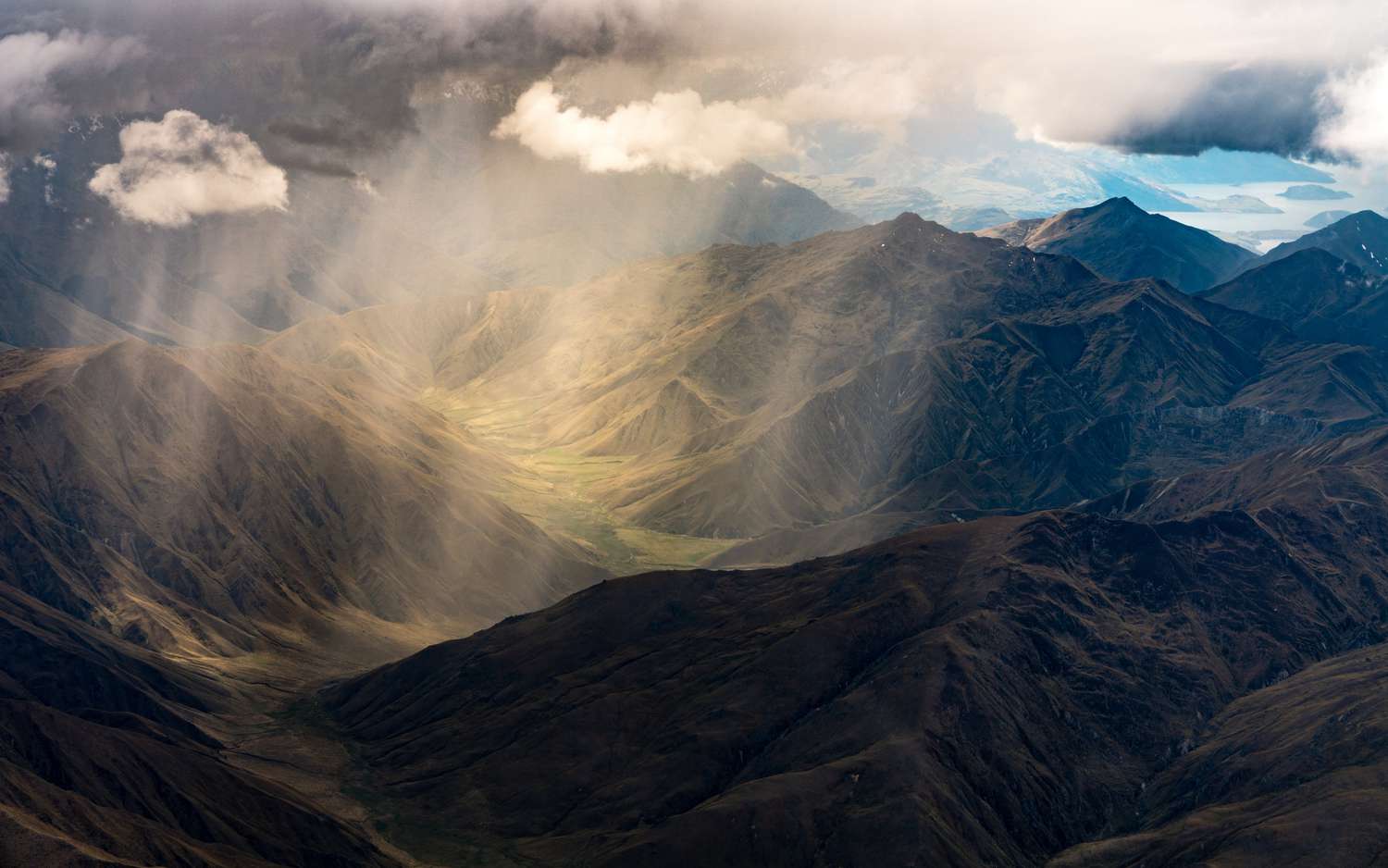
The rainshadow effect is a fascinating phenomenon that occurs in specific geographical areas around the world. It occurs when a mountain range acts as a barrier, causing one side of the range to receive significantly less rainfall than the other side. This creates a stark contrast in climate and vegetation between the two sides of the mountain range.
In this article, we will explore 13 astonishing facts about the rainshadow effect. From the unique landscapes it creates to the impact it has on local ecosystems, these facts shed light on the wonders of this natural phenomenon. So, let’s dive in and uncover the intriguing details behind the rainshadow effect.
Key Takeaways:
- The Rainshadow Effect creates dry areas behind mountains, leading to deserts and unique ecosystems. It also influences agriculture and temperature, shaping diverse landscapes worldwide.
- Understanding the Rainshadow Effect helps us appreciate how geography impacts climate and ecosystems, shaping the beautiful and diverse landscapes of our planet.
The Rainshadow Effect is caused by geographic barriers.
When prevailing winds encounter a mountain range, they are forced to rise and cool down. As a result, the air loses its moisture and creates a rainshadow on the leeward side of the barrier.
The Rainshadow Effect can result in arid conditions.
Areas situated in the rainshadow of a mountain range experience significantly less rainfall compared to the windward side. This can lead to the formation of deserts or semi-arid regions.
The Great Basin in the United States is a prime example of the Rainshadow Effect.
Located on the leeward side of the Sierra Nevada mountain range, the Great Basin experiences dry conditions due to the rainshadow effect of the mountains.
The Atacama Desert in Chile is one of the driest places on Earth.
Its extreme aridity is primarily attributed to the Rainshadow Effect caused by the Andes Mountains.
The Rainshadow Effect can impact local ecosystems.
Areas affected by the Rainshadow Effect often have unique ecosystems adapted to arid conditions, such as specialized desert plants and animals.
The Rainshadow Effect can influence agriculture and human settlements.
Regions experiencing the Rainshadow Effect may face challenges in agriculture due to limited water availability, leading to the need for irrigation systems. It can also impact the distribution of human settlements.
The Gobi Desert in northern China is affected by the Rainshadow Effect.
The desert is situated in the rainshadow of the Himalayan mountain range, resulting in minimal rainfall and harsh desert conditions.
The Rainshadow Effect can create microclimates.
Within a rainshadow region, there can be variations in temperature and precipitation, leading to localized microclimates that differ from the surrounding areas.
In some cases, the Rainshadow Effect can lead to temperature extremes.
Areas experiencing the Rainshadow Effect may witness hotter summers and colder winters due to the lack of moisture in the air.
The Namib Desert in Namibia is influenced by the Rainshadow Effect.
Located on the leeward side of the Namibian escarpment, the desert receives very little rainfall and is known for its towering sand dunes.
The Rainshadow Effect can affect the distribution of plant and animal species.
Certain species may thrive in the dry conditions created by the Rainshadow Effect, while others may struggle to survive in the arid environment.
The Rainshadow Effect is not limited to mountains.
It can also occur in other geographical features such as tall buildings or cliffs, where wind patterns are affected, creating areas of reduced rainfall.
The Rainshadow Effect plays a role in the formation of diverse landscapes.
From deserts and steppes to chaparral and grasslands, the Rainshadow Effect contributes to the rich tapestry of landscapes worldwide.
These 13 astonishing facts about the Rainshadow Effect reveal the profound impact that geographic barriers and air circulation patterns have on regional climates. Understanding this phenomenon helps us appreciate the complexity and diversity of Earth’s landscapes and ecosystems.
Conclusion
The rainshadow effect is a fascinating phenomenon that occurs in certain geographic regions. It occurs when a mountain range blocks prevailing moist air, causing an area on the leeward side of the range to receive significantly less rainfall. Instead, this area experiences dry conditions and a distinct change in climate. This effect has several remarkable characteristics, including the formation of deserts and the presence of unique flora and fauna that are adapted to arid environments.
Understanding the rainshadow effect helps us appreciate the intricate relationship between geography and climate. It also highlights the diverse landscapes and ecosystems that exist across the globe. Whether it’s the Atacama Desert in South America or the Great Basin in the United States, these dry regions owe their existence to the power of the rainshadow effect.
FAQs
1. What causes the rainshadow effect?
The rainshadow effect is caused by a mountain range blocking the moist air from a prevailing wind, forcing it to rise and cool on the windward side. As the air rises, it cools and releases its moisture, resulting in heavy rainfall. On the leeward side of the mountain range, the air descends, warms up, and dries out, creating a rain shadow with limited precipitation.
2. Which regions are most commonly affected by the rainshadow effect?
Regions located on the leeward side of mountain ranges are the most commonly affected by the rainshadow effect. Examples include the Atacama Desert in Chile, the Great Basin in the western United States, and the Gobi Desert in China.
3. How does the rainshadow effect impact local ecosystems?
The rainshadow effect leads to arid conditions in the affected areas, resulting in the development of unique ecosystems adapted to survive with minimal rainfall. These ecosystems often consist of drought-tolerant plant species and specialized animal adaptations suited for water conservation.
4. Can the rainshadow effect be beneficial?
While the rainshadow effect can create challenging living conditions, it also has some benefits. For example, some regions in rain shadows become ideal locations for agricultural activities, as they receive abundant sunshine and have ample opportunities for irrigation.
5. How does the rainshadow effect contribute to the formation of deserts?
The rainshadow effect plays a crucial role in the formation of deserts. The lack of rainfall on the leeward side of mountain ranges creates a dry environment, leading to desertification. Over time, the lack of vegetation and water sources further exacerbates these arid conditions, resulting in the development of desert landscapes.
Was this page helpful?
Our commitment to delivering trustworthy and engaging content is at the heart of what we do. Each fact on our site is contributed by real users like you, bringing a wealth of diverse insights and information. To ensure the highest standards of accuracy and reliability, our dedicated editors meticulously review each submission. This process guarantees that the facts we share are not only fascinating but also credible. Trust in our commitment to quality and authenticity as you explore and learn with us.


